The Evolution of Data Architecture: From Traditional Warehouses to Modern Lakehouse Patterns – A Complete Design Guide for 2025
Introduction
The data architecture landscape is undergoing its most significant transformation since the advent of data warehousing in the 1980s. Organizations today face an unprecedented challenge: managing exponentially growing data volumes while supporting both traditional business intelligence and modern AI workloads on a single, cost-effective platform.
The Challenge: Traditional two-tier architectures with separate data lakes and warehouses result in duplicate data, extra infrastructure costs, security challenges, and significant operational overhead. Meanwhile, the demand for real-time insights and AI-driven decision-making is propelling organizations toward unified analytics platforms.
The Solution: Modern data architecture patterns, particularly the emerging data lakehouse paradigm, promise to bridge this gap by combining the best of both worlds—the flexibility and cost-efficiency of data lakes with the performance and reliability of data warehouses.
Who should read this? Data Engineers, Data Architects, Analytics Engineers, and Technology Leaders responsible for designing scalable data platforms that support both traditional BI and modern AI workloads.
What you’ll learn: How to evaluate and implement modern data architecture patterns, understand the trade-offs between different approaches, and design future-proof data platforms that can evolve with your organization’s needs.
The Historical Context: Understanding Architecture Evolution
The Traditional Data Warehouse Era (1980s-2000s)
The data warehouse concept, pioneered by Bill Inmon and Ralph Kimball, established the foundation for enterprise analytics. Traditional warehouses featured:
- Structured Data Focus: Designed primarily for relational, structured data
- ETL-Heavy Processing: Extract, Transform, Load processes that cleaned and standardized data before storage
- Dimensional Modeling: Star and snowflake schemas optimized for analytical queries
- High Performance: Excellent query performance for structured reporting and BI
Architecture Characteristics:
-- Traditional data warehouse pattern
-- Fact table surrounded by dimension tables
CREATE TABLE fact_sales (
date_key INT,
product_key INT,
customer_key INT,
revenue DECIMAL(10,2),
quantity INT
);
-- Optimized for structured reporting
SELECT
d.year,
p.category,
SUM(f.revenue) as total_revenue
FROM fact_sales f
JOIN dim_date d ON f.date_key = d.date_key
JOIN dim_product p ON f.product_key = p.product_key
GROUP BY d.year, p.category;
The Big Data Revolution: Enter Data Lakes (2000s-2010s)
As organizations grappled with the “3 Vs” of big data—Volume, Velocity, and Variety—traditional warehouses showed limitations:
Challenges with Traditional Warehouses:
- Expensive scaling for massive data volumes
- Inability to handle unstructured data (logs, images, IoT streams)
- Rigid schemas that couldn’t adapt to changing data formats
- Time-consuming ETL processes that created data staleness
The Data Lake Response: Data lakes emerged as a solution, offering:
- Schema-on-Read: Store raw data first, apply structure later
- Multi-Format Support: Handle structured, semi-structured, and unstructured data
- Cost-Effective Storage: Leverage low-cost object storage (S3, ADLS)
- Processing Flexibility: Support batch and stream processing workloads
The Current Challenge: Managing Two-Tier Complexity
Most organizations today operate a two-tier architecture where data is ETL’d from operational databases into a data lake, then a subset is ETL’d again into a data warehouse for business intelligence. This creates:
Operational Challenges:
- Data Duplication: Same data stored in multiple systems
- Pipeline Complexity: Multiple ETL processes to maintain
- Data Freshness Issues: Delays between data generation and availability
- Governance Overhead: Managing security and compliance across systems
- Cost Escalation: Infrastructure and operational expenses for multiple platforms
Modern Data Architecture Patterns: A Comprehensive Analysis
Pattern 1: Modern Data Warehouse (MDW)
A Modern Data Warehouse architecture combines a data lake for storing raw data with a relational data warehouse for serving structured and curated data to business users.
Architecture Components:
# Modern Data Warehouse Pattern
components:
data_lake:
storage: "Cloud object storage (S3, ADLS, GCS)"
formats: ["Parquet", "JSON", "Avro", "Delta"]
purpose: "Raw data storage and preparation"
data_warehouse:
engine: "Cloud MPP warehouse (Snowflake, Redshift, BigQuery)"
modeling: "Dimensional models (star/snowflake schemas)"
purpose: "Curated data for BI and reporting"
processing:
batch: "Spark, Databricks, Synapse"
streaming: "Kafka, Event Hubs, Pub/Sub"
orchestration: "Airflow, Data Factory, Prefect"
Implementation Example:
# Modern ETL pipeline using cloud-native tools
from pyspark.sql import SparkSession
from delta.tables import DeltaTable
class ModernETLPipeline:
def __init__(self, spark_session):
self.spark = spark_session
def ingest_raw_data(self, source_path, target_path):
"""Ingest raw data into data lake"""
df = self.spark.read.json(source_path)
df.write.format("delta").mode("append").save(target_path)
def curate_for_warehouse(self, lake_path, warehouse_table):
"""Transform and load curated data to warehouse"""
raw_df = self.spark.read.format("delta").load(lake_path)
# Apply business transformations
curated_df = raw_df.select(
col("customer_id"),
col("order_date").cast("date"),
col("revenue").cast("decimal(10,2)"),
current_timestamp().alias("processed_at")
).filter(col("revenue") > 0)
# Write to warehouse (could be Snowflake, Redshift, etc.)
curated_df.write.format("snowflake").mode("append").save(warehouse_table)
When to Use MDW:
- Ideal for organizations handling relatively small volumes of data (typically <1TB) and those already familiar with relational data warehouses
- Strong BI and reporting requirements
- Structured data predominates
- Established ETL processes and dimensional modeling expertise
Advantages:
- Proven, well-understood patterns
- Excellent performance for structured analytics
- Strong ecosystem of BI tools
- Clear separation of concerns
Limitations:
- Limited scalability for AI and ML workloads
- Higher costs for massive data volumes
- Complexity of managing two separate systems
Pattern 2: Data Fabric Architecture
Data Fabric is an evolved form of the Modern Data Warehouse, enriched with technologies to support real-time processing, metadata catalogs, data virtualization, APIs, and governance tools.
Key Capabilities:
# Data Fabric Architecture Pattern
fabric_layers:
data_integration:
- real_time_streaming
- batch_processing
- change_data_capture
- api_connectivity
metadata_management:
- data_catalog
- lineage_tracking
- schema_registry
- business_glossary
data_virtualization:
- federated_queries
- data_abstraction
- semantic_layer
- unified_access
governance_security:
- policy_enforcement
- access_control
- data_classification
- compliance_monitoring
Implementation Approach:
# Data Fabric implementation with unified data access
class DataFabricLayer:
def __init__(self, catalog_service, governance_engine):
self.catalog = catalog_service
self.governance = governance_engine
def create_unified_view(self, data_sources):
"""Create federated view across multiple data sources"""
unified_schema = self.catalog.get_unified_schema(data_sources)
# Apply governance policies
filtered_schema = self.governance.apply_access_policies(
unified_schema,
user_context=self.get_current_user_context()
)
return self.create_virtual_dataset(filtered_schema)
def query_across_sources(self, sql_query):
"""Execute queries across distributed data sources"""
execution_plan = self.catalog.optimize_query_plan(sql_query)
return self.execute_federated_query(execution_plan)
When to Use Data Fabric:
- Suited for companies that must integrate and analyze a wide variety of data sources differing in size, speed, and format
- Complex, distributed data environments
- Strong governance and compliance requirements
- Need for real-time data access and processing
Pattern 3: Data Lakehouse Architecture
A data lakehouse is a new, open data management architecture that combines the flexibility, cost-efficiency, and scale of data lakes with the data management and ACID transactions of data warehouses.
Core Architecture Layers:
Data lakehouse architecture consists of five key layers: data ingestion, data storage, metadata, API, and data consumption:
- Ingestion Layer: Extracts data from various sources into the lake
- Storage Layer: Low-cost object storage with open file formats
- Metadata Layer: Manages schemas and provides ACID transactions
- API Layer: Enables tool connectivity and real-time processing
- Consumption Layer: Supports BI, ML, and analytics workloads
Technical Implementation:
# Data Lakehouse implementation with Delta Lake
from delta import DeltaTable
from pyspark.sql import SparkSession
from pyspark.sql.functions import *
class LakehouseArchitecture:
def __init__(self, spark_session, storage_path):
self.spark = spark_session
self.storage_path = storage_path
def create_bronze_layer(self, source_data):
"""Raw data ingestion layer"""
source_data.write.format("delta").mode("append").save(
f"{self.storage_path}/bronze/raw_events"
)
def create_silver_layer(self):
"""Cleaned and validated data layer"""
bronze_df = self.spark.read.format("delta").load(
f"{self.storage_path}/bronze/raw_events"
)
# Data quality transformations
silver_df = bronze_df.filter(
col("event_time").isNotNull() &
col("user_id").isNotNull()
).withColumn(
"processed_timestamp", current_timestamp()
).dropDuplicates(["event_id"])
silver_df.write.format("delta").mode("append").save(
f"{self.storage_path}/silver/validated_events"
)
def create_gold_layer(self):
"""Business-ready aggregated data layer"""
silver_df = self.spark.read.format("delta").load(
f"{self.storage_path}/silver/validated_events"
)
# Business aggregations
gold_df = silver_df.groupBy(
window(col("event_time"), "1 hour"),
col("user_segment")
).agg(
count("*").alias("event_count"),
countDistinct("user_id").alias("unique_users"),
avg("session_duration").alias("avg_session_duration")
)
gold_df.write.format("delta").mode("append").save(
f"{self.storage_path}/gold/user_engagement_metrics"
)
def enable_time_travel(self, table_path, version):
"""Leverage ACID capabilities for data versioning"""
return self.spark.read.format("delta").option(
"versionAsOf", version
).load(table_path)
Medallion Architecture Pattern: The medallion architecture uses bronze layer for raw data, silver layer for validated and deduplicated data, and gold layer for highly refined data.
-- Example of medallion architecture queries
-- Bronze to Silver transformation
CREATE OR REPLACE VIEW silver_customer_events AS
SELECT
customer_id,
event_type,
event_timestamp,
CASE
WHEN event_type = 'purchase' THEN event_value
ELSE 0
END as purchase_amount,
ROW_NUMBER() OVER (
PARTITION BY customer_id, event_timestamp
ORDER BY ingestion_time DESC
) as rn
FROM bronze_raw_events
WHERE customer_id IS NOT NULL
AND event_timestamp IS NOT NULL
AND rn = 1;
-- Silver to Gold aggregation
CREATE OR REPLACE VIEW gold_customer_metrics AS
SELECT
customer_id,
DATE_TRUNC('month', event_timestamp) as month,
COUNT(*) as total_events,
SUM(purchase_amount) as monthly_revenue,
AVG(purchase_amount) as avg_purchase_value
FROM silver_customer_events
WHERE event_type = 'purchase'
GROUP BY customer_id, DATE_TRUNC('month', event_timestamp);
Advanced Lakehouse Features:
# Advanced lakehouse capabilities
class AdvancedLakehouseOperations:
def setup_streaming_ingestion(self):
"""Real-time data ingestion with structured streaming"""
streaming_df = self.spark.readStream.format("kafka").option(
"kafka.bootstrap.servers", "localhost:9092"
).option("subscribe", "user_events").load()
parsed_df = streaming_df.select(
from_json(col("value").cast("string"), self.event_schema).alias("data")
).select("data.*")
query = parsed_df.writeStream.format("delta").outputMode(
"append"
).option("checkpointLocation", "/tmp/checkpoint").trigger(
processingTime="10 seconds"
).start("/lakehouse/bronze/streaming_events")
return query
def implement_data_versioning(self, table_path):
"""Implement data versioning and rollback capabilities"""
delta_table = DeltaTable.forPath(self.spark, table_path)
# Get table history
history_df = delta_table.history()
# Rollback to previous version if needed
delta_table.restoreToVersion(history_df.collect()[1]['version'])
def optimize_storage(self, table_path):
"""Optimize storage with compaction and Z-ordering"""
delta_table = DeltaTable.forPath(self.spark, table_path)
# Compact small files
delta_table.optimize().executeCompaction()
# Z-order for query performance
delta_table.optimize().executeZOrderBy("customer_id", "event_date")
When to Use Data Lakehouse:
- Best for unified analytics platforms, scalable AI workloads, and mixed data types
- Organizations need both BI and ML capabilities
- Cost optimization is important
- Requirement for real-time and batch processing
- Good rule of thumb: “Use it until you can’t.” When performance or governance needs outgrow the Lakehouse, offload specific datasets to an RDW as needed
Technology Stack Considerations
Cloud Platform Capabilities
AWS Lakehouse Stack:
aws_lakehouse:
storage: "Amazon S3"
catalog: "AWS Glue Data Catalog"
processing: "Amazon EMR, AWS Glue"
warehouse: "Amazon Redshift"
analytics: "Amazon Athena"
ml_platform: "Amazon SageMaker"
governance: "AWS Lake Formation"
Azure Synapse Analytics: When integrated with Azure Data Lake, Azure Synapse Analytics delivers many features of a data lakehouse architecture as a fully managed, petabyte-scale cloud data warehouse designed for large-scale data storage and analysis.
Databricks Platform: Databricks is at the forefront of the data lakehouse movement with Delta Lake, an open-format storage layer designed to bring reliability, security, and performance to data lakes.
Open Source Technologies
Delta Lake Implementation:
# Setting up Delta Lake for ACID transactions
from delta.tables import DeltaTable
from pyspark.sql.functions import *
# Create Delta table with schema enforcement
delta_table = DeltaTable.create(spark)\
.tableName("customer_transactions")\
.addColumn("transaction_id", "STRING")\
.addColumn("customer_id", "STRING")\
.addColumn("amount", "DECIMAL(10,2)")\
.addColumn("transaction_date", "TIMESTAMP")\
.partitionedBy("transaction_date")\
.execute()
# Perform upsert (merge) operations
delta_table.alias("target").merge(
new_transactions.alias("source"),
"target.transaction_id = source.transaction_id"
).whenMatchedUpdate(set={
"amount": "source.amount",
"transaction_date": "source.transaction_date"
}).whenNotMatchedInsert(values={
"transaction_id": "source.transaction_id",
"customer_id": "source.customer_id",
"amount": "source.amount",
"transaction_date": "source.transaction_date"
}).execute()
Apache Iceberg for Large-Scale Analytics:
-- Creating Iceberg tables for petabyte-scale analytics
CREATE TABLE customer_events (
event_id BIGINT,
customer_id STRING,
event_type STRING,
event_timestamp TIMESTAMP,
event_data MAP<STRING, STRING>
) USING ICEBERG
PARTITIONED BY (days(event_timestamp))
TBLPROPERTIES (
'write.format.default' = 'parquet',
'write.parquet.compression-codec' = 'snappy'
);
-- Time travel queries with Iceberg
SELECT * FROM customer_events
FOR SYSTEM_TIME AS OF '2025-01-01 00:00:00';
Architecture Decision Framework
Evaluation Criteria Matrix
| Criteria | Modern DW | Data Fabric | Data Lakehouse | Weight |
|---|---|---|---|---|
| Cost Efficiency | ⭐⭐⭐ | ⭐⭐ | ⭐⭐⭐⭐⭐ | High |
| BI Performance | ⭐⭐⭐⭐⭐ | ⭐⭐⭐⭐ | ⭐⭐⭐⭐ | High |
| ML/AI Support | ⭐⭐ | ⭐⭐⭐⭐ | ⭐⭐⭐⭐⭐ | High |
| Real-time Capability | ⭐⭐ | ⭐⭐⭐⭐⭐ | ⭐⭐⭐⭐ | Medium |
| Data Governance | ⭐⭐⭐⭐ | ⭐⭐⭐⭐⭐ | ⭐⭐⭐ | High |
| Implementation Complexity | ⭐⭐⭐⭐⭐ | ⭐⭐ | ⭐⭐⭐ | Medium |
| Vendor Lock-in Risk | ⭐⭐ | ⭐⭐ | ⭐⭐⭐⭐ | Medium |
Decision Tree Framework
# Architecture decision framework
class ArchitectureDecisionEngine:
def __init__(self, requirements):
self.requirements = requirements
def recommend_architecture(self):
score_mdw = self.score_modern_warehouse()
score_fabric = self.score_data_fabric()
score_lakehouse = self.score_lakehouse()
recommendations = {
'modern_warehouse': score_mdw,
'data_fabric': score_fabric,
'data_lakehouse': score_lakehouse
}
return max(recommendations, key=recommendations.get)
def score_modern_warehouse(self):
score = 0
if self.requirements['data_volume'] < 1000: # GB
score += 30
if self.requirements['structured_data_pct'] > 80:
score += 25
if self.requirements['bi_focus'] > self.requirements['ml_focus']:
score += 25
if self.requirements['team_sql_expertise'] > 7:
score += 20
return score
def score_data_fabric(self):
score = 0
if self.requirements['data_sources'] > 10:
score += 30
if self.requirements['governance_requirements'] > 8:
score += 25
if self.requirements['real_time_needs'] > 7:
score += 25
if self.requirements['distributed_teams']:
score += 20
return score
def score_lakehouse(self):
score = 0
if self.requirements['data_variety'] > 7:
score += 30
if self.requirements['ml_focus'] >= self.requirements['bi_focus']:
score += 25
if self.requirements['cost_optimization'] > 8:
score += 25
if self.requirements['cloud_native_preference']:
score += 20
return score
Implementation Strategies and Best Practices
Migration Approach: Modernizing Existing Architectures
Phase 1: Assessment and Planning
# Data architecture assessment framework
class ArchitectureAssessment:
def analyze_current_state(self, existing_systems):
assessment = {
'data_volumes': self.measure_data_growth(),
'query_patterns': self.analyze_workloads(),
'cost_analysis': self.calculate_tco(),
'performance_metrics': self.benchmark_queries(),
'governance_gaps': self.audit_compliance()
}
return assessment
def create_migration_roadmap(self, assessment, target_architecture):
phases = []
# Phase 1: Foundational changes
phases.append({
'name': 'Foundation',
'duration': '3-6 months',
'activities': [
'Cloud storage setup',
'Data lake implementation',
'Basic ETL migration'
]
})
# Phase 2: Advanced capabilities
phases.append({
'name': 'Enhancement',
'duration': '6-12 months',
'activities': [
'Streaming ingestion',
'ML pipeline deployment',
'Advanced analytics enablement'
]
})
return phases
Phase 2: Parallel Implementation
-- Implementing parallel data flows during migration
-- Traditional warehouse load
INSERT INTO traditional_dw.fact_sales
SELECT
date_id,
product_id,
customer_id,
SUM(revenue) as total_revenue
FROM staging.raw_transactions
GROUP BY date_id, product_id, customer_id;
-- Lakehouse parallel load
INSERT INTO lakehouse.bronze_transactions
SELECT * FROM staging.raw_transactions;
-- Data validation between systems
WITH traditional_summary AS (
SELECT SUM(total_revenue) as total FROM traditional_dw.fact_sales
),
lakehouse_summary AS (
SELECT SUM(revenue) as total FROM lakehouse.gold_sales_summary
)
SELECT
t.total as traditional_total,
l.total as lakehouse_total,
ABS(t.total - l.total) as variance
FROM traditional_summary t, lakehouse_summary l;
Performance Optimization Strategies
Query Optimization in Lakehouse Architecture:
# Advanced query optimization for lakehouse
class LakehouseOptimizer:
def optimize_delta_table(self, table_path, partition_cols, z_order_cols):
"""Optimize Delta tables for query performance"""
delta_table = DeltaTable.forPath(self.spark, table_path)
# Optimize file sizes and Z-order
delta_table.optimize().where(
f"date >= '{self.get_optimization_date()}'"
).executeZOrderBy(*z_order_cols)
# Vacuum old files (be careful with time travel requirements)
delta_table.vacuum(retentionHours=168) # 7 days
def implement_caching_strategy(self, frequently_accessed_tables):
"""Implement intelligent caching for hot data"""
for table in frequently_accessed_tables:
df = self.spark.read.format("delta").load(table['path'])
# Cache frequently accessed partitions
hot_partitions = df.filter(
col("date") >= date_sub(current_date(), 30)
)
hot_partitions.cache()
# Persist dimension tables in memory
if table['type'] == 'dimension':
df.persist(StorageLevel.MEMORY_AND_DISK)
Data Governance in Modern Architectures
Implementing Unified Governance:
# Comprehensive data governance framework
class ModernDataGovernance:
def __init__(self, catalog_service, policy_engine):
self.catalog = catalog_service
self.policy_engine = policy_engine
def implement_data_classification(self, table_metadata):
"""Automatically classify data based on content and metadata"""
classification_rules = {
'PII': ['email', 'ssn', 'phone', 'address'],
'FINANCIAL': ['salary', 'account', 'balance', 'payment'],
'SENSITIVE': ['medical', 'health', 'diagnosis']
}
for table in table_metadata:
table['classification'] = self.classify_columns(
table['columns'], classification_rules
)
self.catalog.update_table_metadata(table)
def enforce_access_policies(self, user_context, data_request):
"""Dynamic policy enforcement based on user context"""
policies = self.policy_engine.get_applicable_policies(
user_context['role'],
user_context['department'],
data_request['tables']
)
filtered_query = self.apply_row_level_security(
data_request['query'], policies
)
return self.apply_column_masking(filtered_query, policies)
def implement_lineage_tracking(self, pipeline_metadata):
"""Track data lineage across lakehouse layers"""
lineage_graph = {
'bronze_to_silver': self.extract_transformations(
pipeline_metadata['bronze_silver_jobs']
),
'silver_to_gold': self.extract_transformations(
pipeline_metadata['silver_gold_jobs']
),
'consumption': self.track_downstream_usage(
pipeline_metadata['analytics_jobs']
)
}
self.catalog.update_lineage_metadata(lineage_graph)
Real-World Implementation Case Studies
Case Study 1: Global Retail Chain Migration
Challenge: A global retail organization with 50+ countries needed to consolidate data from 200+ stores, e-commerce platforms, and supply chain systems to enable real-time inventory optimization and personalized customer experiences.
Previous Architecture Pain Points:
- 15+ separate data warehouses across regions
- 3-day latency for global inventory visibility
- $2M+ annual infrastructure costs
- Limited ML capabilities for demand forecasting
Solution: Lakehouse Implementation
# Retail lakehouse architecture implementation
class RetailLakehouseImplementation:
def __init__(self, spark_session):
self.spark = spark_session
self.bronze_path = "/lakehouse/bronze"
self.silver_path = "/lakehouse/silver"
self.gold_path = "/lakehouse/gold"
def ingest_store_data(self):
"""Real-time ingestion from 200+ stores"""
store_stream = self.spark.readStream.format("kafka").option(
"kafka.bootstrap.servers", "global-kafka-cluster:9092"
).option("subscribe", "store-transactions,inventory-updates").load()
# Process store transactions
transactions = store_stream.filter(
col("topic") == "store-transactions"
).select(
from_json(col("value").cast("string"), self.transaction_schema).alias("data")
).select("data.*")
# Write to bronze layer with partitioning
transactions.writeStream.format("delta").outputMode("append").option(
"checkpointLocation", "/checkpoints/store-transactions"
).partitionBy("country", "date").start(f"{self.bronze_path}/transactions")
def create_global_inventory_view(self):
"""Unified global inventory visibility"""
bronze_inventory = self.spark.read.format("delta").load(
f"{self.bronze_path}/inventory"
)
# Silver layer: Clean and standardize across regions
silver_inventory = bronze_inventory.select(
col("store_id"),
col("product_sku").alias("sku"),
col("quantity_on_hand").cast("integer"),
col("reserved_quantity").cast("integer"),
col("available_quantity").cast("integer"),
col("last_updated").cast("timestamp"),
col("country"),
col("region")
).filter(
col("quantity_on_hand") >= 0 &
col("last_updated") > current_timestamp() - expr("INTERVAL 1 DAY")
)
silver_inventory.write.format("delta").mode("overwrite").save(
f"{self.silver_path}/standardized_inventory"
)
# Gold layer: Business-ready aggregations
global_availability = silver_inventory.groupBy(
"sku", "country", "region"
).agg(
sum("available_quantity").alias("total_available"),
count("store_id").alias("stores_with_stock"),
avg("available_quantity").alias("avg_stock_per_store"),
max("last_updated").alias("latest_update")
)
global_availability.write.format("delta").mode("overwrite").save(
f"{self.gold_path}/global_inventory_summary"
)
def enable_ml_demand_forecasting(self):
"""Enable ML workflows on unified data"""
historical_sales = self.spark.read.format("delta").load(
f"{self.gold_path}/sales_history"
)
# Feature engineering for ML
ml_features = historical_sales.select(
col("sku"),
col("store_id"),
col("sales_date"),
col("quantity_sold"),
col("revenue"),
dayofweek("sales_date").alias("day_of_week"),
month("sales_date").alias("month"),
lag("quantity_sold", 7).over(
Window.partitionBy("sku", "store_id").orderBy("sales_date")
).alias("sales_7_days_ago"),
avg("quantity_sold").over(
Window.partitionBy("sku", "store_id")
.orderBy("sales_date")
.rowsBetween(-30, -1)
).alias("avg_sales_30_days")
)
ml_features.write.format("delta").mode("overwrite").save(
f"{self.gold_path}/ml_demand_features"
)
Results Achieved:
- Real-time Inventory: Global inventory visibility reduced from 3 days to 15 minutes
- Cost Reduction: 60% infrastructure cost savings ($1.2M annually)
- ML Capabilities: Demand forecasting accuracy improved by 35%
- Operational Efficiency: Inventory turnover increased by 18%
Case Study 2: Financial Services Risk Analytics Platform
Challenge: A regional bank needed to implement real-time fraud detection, regulatory reporting, and customer risk scoring while maintaining strict compliance with financial regulations.
Architecture Solution:
# Financial services lakehouse with enhanced governance
class FinancialServicesLakehouse:
def __init__(self, spark_session, encryption_service):
self.spark = spark_session
self.encryption = encryption_service
self.audit_logger = AuditLogger()
def ingest_transaction_streams(self):
"""Secure real-time transaction processing"""
# Encrypted streaming ingestion
transaction_stream = self.spark.readStream.format("kafka").option(
"kafka.bootstrap.servers", "secure-kafka:9093"
).option("kafka.security.protocol", "SSL").option(
"subscribe", "customer-transactions"
).load()
# Decrypt and validate transactions
decrypted_transactions = transaction_stream.select(
self.encryption.decrypt_column(col("value")).alias("transaction_data")
).select(
from_json("transaction_data", self.secure_transaction_schema).alias("txn")
).select("txn.*")
# Real-time fraud scoring
fraud_scored = decrypted_transactions.withColumn(
"fraud_score",
self.calculate_fraud_score(
col("amount"), col("merchant_category"),
col("customer_id"), col("transaction_time")
)
).withColumn(
"risk_level",
when(col("fraud_score") > 0.8, "HIGH")
.when(col("fraud_score") > 0.5, "MEDIUM")
.otherwise("LOW")
)
# Write with encryption and audit
fraud_scored.writeStream.foreachBatch(
self.secure_write_with_audit
).start()
def implement_regulatory_reporting(self):
"""Automated regulatory compliance reporting"""
# BSA/AML reporting requirements
suspicious_patterns = self.spark.read.format("delta").load(
"/lakehouse/gold/transaction_analytics"
).filter(
(col("daily_cash_amount") > 10000) | # CTR threshold
(col("structuring_pattern_score") > 0.7) | # Potential structuring
(col("velocity_anomaly_score") > 0.8) # Unusual velocity
)
# Generate CTR (Currency Transaction Report) data
ctr_data = suspicious_patterns.select(
col("customer_id"),
col("transaction_date"),
col("total_cash_amount"),
col("transaction_count"),
col("filing_institution"),
current_timestamp().alias("report_generated_at")
).withColumn(
"report_id",
concat(lit("CTR_"), date_format(current_date(), "yyyyMMdd"), lit("_"),
monotonically_increasing_id())
)
# Encrypted storage for regulatory data
self.secure_write_regulatory_data(ctr_data, "/regulatory/ctr_reports")
def create_customer_risk_profiles(self):
"""ML-powered customer risk scoring"""
customer_features = self.spark.sql("""
WITH customer_behavior AS (
SELECT
customer_id,
COUNT(*) as transaction_count_90d,
SUM(amount) as total_amount_90d,
AVG(amount) as avg_transaction_amount,
STDDEV(amount) as amount_volatility,
COUNT(DISTINCT merchant_category) as merchant_diversity,
COUNT(DISTINCT DATE(transaction_time)) as active_days,
MAX(amount) as max_transaction_amount
FROM lakehouse_gold.transactions
WHERE transaction_time >= current_date() - INTERVAL 90 DAYS
GROUP BY customer_id
),
risk_indicators AS (
SELECT
customer_id,
CASE WHEN avg_transaction_amount > 5000 THEN 1 ELSE 0 END as high_avg_amount,
CASE WHEN amount_volatility > avg_transaction_amount * 2 THEN 1 ELSE 0 END as high_volatility,
CASE WHEN merchant_diversity < 3 THEN 1 ELSE 0 END as low_merchant_diversity,
CASE WHEN max_transaction_amount > 25000 THEN 1 ELSE 0 END as large_transaction_flag
FROM customer_behavior
)
SELECT
cb.*,
ri.high_avg_amount + ri.high_volatility +
ri.low_merchant_diversity + ri.large_transaction_flag as risk_score
FROM customer_behavior cb
JOIN risk_indicators ri ON cb.customer_id = ri.customer_id
""")
customer_features.write.format("delta").mode("overwrite").save(
"/lakehouse/gold/customer_risk_profiles"
)
Compliance and Security Features:
class FinancialDataGovernance:
def implement_field_level_encryption(self, sensitive_columns):
"""Implement field-level encryption for PII/PCI data"""
encryption_mapping = {
'account_number': 'AES256_DETERMINISTIC',
'ssn': 'AES256_RANDOMIZED',
'customer_name': 'AES256_DETERMINISTIC',
'address': 'AES256_RANDOMIZED'
}
for column, encryption_type in encryption_mapping.items():
if column in sensitive_columns:
self.apply_column_encryption(column, encryption_type)
def implement_data_retention_policies(self):
"""Automated data retention for regulatory compliance"""
retention_policies = {
'transaction_data': 2555, # 7 years in days
'customer_communications': 1095, # 3 years
'risk_assessments': 1825, # 5 years
'audit_logs': 2920 # 8 years
}
for data_type, retention_days in retention_policies.items():
cutoff_date = current_date() - expr(f"INTERVAL {retention_days} DAYS")
self.archive_old_data(data_type, cutoff_date)
def generate_audit_trails(self, data_access_event):
"""Comprehensive audit logging for regulatory compliance"""
audit_record = {
'timestamp': current_timestamp(),
'user_id': data_access_event['user_id'],
'data_classification': data_access_event['data_classification'],
'access_type': data_access_event['access_type'], # READ, WRITE, DELETE
'data_volume': data_access_event['record_count'],
'purpose': data_access_event['business_purpose'],
'approval_reference': data_access_event['approval_id']
}
self.write_audit_record(audit_record)
Results Achieved:
- Real-time Fraud Detection: Reduced false positives by 45% while maintaining 99.2% fraud detection rate
- Regulatory Compliance: Automated 90% of regulatory reporting workflows
- Cost Efficiency: 40% reduction in compliance-related manual processes
- Risk Management: Improved customer risk scoring accuracy by 30%
Performance Benchmarking and Optimization
Query Performance Comparison
Traditional Warehouse vs. Lakehouse Performance:
-- Complex analytical query performance comparison
-- Traditional warehouse approach
WITH sales_summary AS (
SELECT
d.year,
d.quarter,
p.category,
c.segment,
SUM(f.revenue) as total_revenue,
COUNT(f.transaction_id) as transaction_count
FROM fact_sales f
JOIN dim_date d ON f.date_key = d.date_key
JOIN dim_product p ON f.product_key = p.product_key
JOIN dim_customer c ON f.customer_key = c.customer_key
WHERE d.year BETWEEN 2023 AND 2025
GROUP BY d.year, d.quarter, p.category, c.segment
),
growth_analysis AS (
SELECT
*,
LAG(total_revenue) OVER (
PARTITION BY category, segment
ORDER BY year, quarter
) as prev_quarter_revenue,
total_revenue / LAG(total_revenue) OVER (
PARTITION BY category, segment
ORDER BY year, quarter
) - 1 as growth_rate
FROM sales_summary
)
SELECT * FROM growth_analysis
WHERE growth_rate > 0.1
ORDER BY growth_rate DESC;
-- Lakehouse approach with optimizations
SELECT
year(transaction_date) as year,
quarter(transaction_date) as quarter,
product_category as category,
customer_segment as segment,
SUM(revenue) as total_revenue,
COUNT(*) as transaction_count,
(SUM(revenue) / LAG(SUM(revenue)) OVER (
PARTITION BY product_category, customer_segment
ORDER BY year(transaction_date), quarter(transaction_date)
) - 1) as growth_rate
FROM delta.`/lakehouse/gold/enriched_transactions`
WHERE year(transaction_date) BETWEEN 2023 AND 2025
GROUP BY year(transaction_date), quarter(transaction_date),
product_category, customer_segment
HAVING growth_rate > 0.1
ORDER BY growth_rate DESC;
Performance Optimization Techniques:
class PerformanceOptimizer:
def optimize_lakehouse_queries(self, table_configs):
"""Advanced performance tuning for lakehouse"""
for table in table_configs:
# Implement liquid clustering for Databricks
if table['platform'] == 'databricks':
self.spark.sql(f"""
ALTER TABLE {table['name']}
CLUSTER BY (customer_segment, product_category, transaction_date)
""")
# Optimize for time-series queries
if table['type'] == 'time_series':
self.implement_time_partitioning(table)
# Create bloom filters for high-cardinality columns
if table['has_high_cardinality']:
self.create_bloom_filters(table['high_cardinality_columns'])
def implement_caching_strategy(self, workload_patterns):
"""Intelligent caching based on query patterns"""
hot_data_threshold = 0.8 # 80% of queries access this data
for pattern in workload_patterns:
if pattern['access_frequency'] > hot_data_threshold:
# Cache in SSD/memory for frequently accessed data
df = self.spark.read.format("delta").load(pattern['table_path'])
df.cache()
# Pre-aggregate common query patterns
if pattern['aggregation_heavy']:
self.create_materialized_aggregations(pattern)
def benchmark_query_performance(self, test_queries):
"""Comprehensive performance benchmarking"""
results = {}
for query_name, query_sql in test_queries.items():
start_time = time.time()
# Execute with query plan analysis
df = self.spark.sql(query_sql)
df.explain(mode="cost") # Analyze query plan
result_count = df.count() # Force execution
execution_time = time.time() - start_time
results[query_name] = {
'execution_time_seconds': execution_time,
'rows_processed': result_count,
'performance_tier': self.classify_performance(execution_time)
}
return results
Emerging Trends and Future Architecture Patterns
AI-Native Data Architecture
Modern data architectures are evolving to be AI-first, with built-in capabilities for machine learning and generative AI workloads:
# AI-native lakehouse implementation
class AIOptimizedLakehouse:
def __init__(self, spark_session, vector_store):
self.spark = spark_session
self.vector_store = vector_store # For embeddings and similarity search
def implement_vector_search_layer(self):
"""Native vector storage for AI workloads"""
# Process unstructured data for embeddings
document_df = self.spark.read.format("delta").load("/lakehouse/bronze/documents")
# Generate embeddings using distributed processing
embedded_docs = document_df.select(
col("document_id"),
col("content"),
self.generate_embeddings(col("content")).alias("content_embedding"),
col("metadata")
)
# Store in vector-optimized format
embedded_docs.write.format("delta").mode("append").save(
"/lakehouse/gold/vector_embeddings"
)
def enable_llm_training_pipelines(self):
"""Prepare data for LLM training and fine-tuning"""
training_corpus = self.spark.sql("""
SELECT
document_id,
CONCAT('Instruction: ', instruction, ' Response: ', response) as training_text,
content_type,
quality_score
FROM lakehouse_gold.instruction_response_pairs
WHERE quality_score > 0.8
AND content_type IN ('technical_documentation', 'customer_support', 'product_info')
""")
# Tokenize and prepare for distributed training
tokenized_data = training_corpus.select(
col("document_id"),
self.tokenize_for_training(col("training_text")).alias("tokens"),
col("content_type").alias("domain_label")
)
# Save in format optimized for ML frameworks
tokenized_data.write.format("parquet").mode("overwrite").save(
"/lakehouse/ml/llm_training_data"
)
def implement_rag_architecture(self):
"""Retrieval-Augmented Generation support"""
# Create searchable knowledge base
knowledge_base = self.spark.read.format("delta").load(
"/lakehouse/gold/structured_knowledge"
)
# Implement similarity search for RAG
def retrieve_context(query_embedding, top_k=5):
similar_docs = self.vector_store.similarity_search(
query_embedding, k=top_k
)
return similar_docs
# Real-time context retrieval for LLM queries
rag_pipeline = knowledge_base.select(
col("content_id"),
col("content_text"),
col("content_embedding"),
col("metadata"),
col("last_updated")
).filter(
col("last_updated") > current_timestamp() - expr("INTERVAL 30 DAYS")
)
return rag_pipeline
Real-Time Streaming Architecture Patterns
The demand for real-time insights is driving architectures that blur the line between batch and streaming:
# Unified batch and streaming architecture
class UnifiedStreamingLakehouse:
def __init__(self, spark_session):
self.spark = spark_session
self.checkpoint_path = "/lakehouse/checkpoints"
def implement_kappa_architecture(self):
"""Single pipeline for both batch and streaming"""
# Unified processing logic for batch and stream
def process_events(df, batch_id=None):
processed = df.select(
col("event_id"),
col("user_id"),
col("event_type"),
col("timestamp"),
col("properties"),
# Unified business logic
self.calculate_user_score(col("properties")).alias("user_score"),
self.detect_anomalies(col("event_type"), col("timestamp")).alias("is_anomaly")
).withColumn(
"processing_time", current_timestamp()
)
# Write to same Delta table (handles both batch and streaming)
processed.write.format("delta").mode("append").save(
"/lakehouse/silver/processed_events"
)
# Streaming ingestion
streaming_events = self.spark.readStream.format("kafka").load()
streaming_query = streaming_events.writeStream.foreachBatch(
process_events
).trigger(processingTime="30 seconds").start()
# Batch backfill using same logic
historical_events = self.spark.read.format("parquet").load("/historical_data")
process_events(historical_events)
return streaming_query
def implement_change_data_capture(self):
"""Real-time CDC for operational databases"""
# Debezium-style CDC processing
cdc_stream = self.spark.readStream.format("kafka").option(
"subscribe", "mysql.retail_db.orders,mysql.retail_db.customers"
).load()
# Parse CDC events
parsed_cdc = cdc_stream.select(
from_json(col("value").cast("string"), self.cdc_schema).alias("cdc")
).select(
col("cdc.before").alias("before_image"),
col("cdc.after").alias("after_image"),
col("cdc.op").alias("operation"), # c=create, u=update, d=delete
col("cdc.ts_ms").alias("transaction_timestamp"),
col("cdc.source.table").alias("source_table")
)
# Apply changes to lakehouse tables
def apply_cdc_changes(df, batch_id):
for table_name in df.select("source_table").distinct().collect():
table_changes = df.filter(col("source_table") == table_name['source_table'])
self.merge_cdc_changes(table_changes, table_name['source_table'])
cdc_query = parsed_cdc.writeStream.foreachBatch(
apply_cdc_changes
).start()
return cdc_query
Data Mesh Integration with Lakehouse
The convergence of data mesh principles with lakehouse architecture represents the future of enterprise data management:
# Data mesh implementation on lakehouse foundation
class DataMeshLakehouse:
def __init__(self, domain_configs):
self.domains = domain_configs
self.global_catalog = GlobalDataCatalog()
def create_domain_data_products(self, domain_name):
"""Implement domain-driven data products"""
domain_config = self.domains[domain_name]
# Each domain manages its own data products
domain_products = {
'customer_360': {
'path': f'/lakehouse/domains/{domain_name}/gold/customer_360',
'schema': domain_config['customer_schema'],
'sla': {'freshness': '15_minutes', 'quality': '99.5%'},
'access_patterns': ['analytical', 'operational', 'ml_training']
},
'product_catalog': {
'path': f'/lakehouse/domains/{domain_name}/gold/product_catalog',
'schema': domain_config['product_schema'],
'sla': {'freshness': '1_hour', 'quality': '99.9%'},
'access_patterns': ['analytical', 'real_time_lookup']
}
}
# Register data products in global catalog
for product_name, product_config in domain_products.items():
self.global_catalog.register_data_product(
domain=domain_name,
product=product_name,
config=product_config
)
return domain_products
def implement_federated_governance(self):
"""Federated governance with global policies"""
global_policies = {
'data_classification': self.classify_data_sensitivity(),
'retention_policies': self.define_retention_requirements(),
'access_controls': self.setup_rbac_policies(),
'quality_standards': self.define_quality_metrics()
}
# Apply to all domains while allowing domain-specific extensions
for domain_name in self.domains.keys():
domain_policies = self.merge_policies(
global_policies,
self.domains[domain_name]['local_policies']
)
self.apply_domain_governance(domain_name, domain_policies)
def enable_cross_domain_analytics(self):
"""Enable analytics across domain boundaries"""
# Discover available data products
available_products = self.global_catalog.discover_products(
domains=['sales', 'marketing', 'finance'],
data_types=['customer', 'transaction', 'product']
)
# Create cross-domain analytical views
cross_domain_view = self.spark.sql(f"""
CREATE OR REPLACE VIEW cross_domain_customer_journey AS
SELECT
s.customer_id,
s.purchase_history,
m.campaign_interactions,
f.payment_preferences,
s.clv_score,
m.engagement_score,
f.credit_risk_score
FROM sales_domain.customer_360 s
JOIN marketing_domain.customer_profiles m
ON s.customer_id = m.customer_id
JOIN finance_domain.customer_financials f
ON s.customer_id = f.customer_id
WHERE s.data_quality_score > 0.95
AND m.profile_completeness > 0.8
AND f.risk_assessment_date > current_date() - INTERVAL 90 DAYS
""")
return cross_domain_view
Architecture Selection Decision Guide
Comprehensive Decision Framework
# Complete architecture decision engine
class ArchitectureDecisionFramework:
def __init__(self):
self.evaluation_criteria = {
'technical': ['data_volume', 'data_variety', 'query_complexity', 'real_time_needs'],
'organizational': ['team_skills', 'change_tolerance', 'budget_constraints'],
'strategic': ['ai_ml_priority', 'vendor_preference', 'compliance_requirements']
}
def comprehensive_assessment(self, organization_profile):
"""Complete organizational data architecture assessment"""
technical_score = self.assess_technical_requirements(organization_profile)
organizational_readiness = self.assess_organizational_factors(organization_profile)
strategic_alignment = self.assess_strategic_priorities(organization_profile)
recommendation = self.generate_recommendation(
technical_score, organizational_readiness, strategic_alignment
)
return {
'recommended_architecture': recommendation['primary'],
'alternative_options': recommendation['alternatives'],
'implementation_roadmap': self.create_roadmap(recommendation),
'risk_assessment': self.assess_implementation_risks(recommendation),
'success_metrics': self.define_success_criteria(recommendation)
}
def generate_recommendation(self, technical, organizational, strategic):
"""AI-powered architecture recommendation"""
scoring_matrix = {
'modern_warehouse': self.score_modern_warehouse(technical, organizational, strategic),
'data_fabric': self.score_data_fabric(technical, organizational, strategic),
'data_lakehouse': self.score_data_lakehouse(technical, organizational, strategic),
'hybrid_approach': self.score_hybrid_approach(technical, organizational, strategic)
}
# Sort by score and confidence
ranked_options = sorted(
scoring_matrix.items(),
key=lambda x: (x[1]['score'], x[1]['confidence']),
reverse=True
)
return {
'primary': ranked_options[0],
'alternatives': ranked_options[1:3],
'reasoning': self.explain_recommendation(ranked_options[0])
}
Implementation Roadmap Template
Phase-Based Implementation Strategy:
# 18-month implementation roadmap
implementation_phases:
phase_1_foundation:
duration: "3-6 months"
objectives:
- "Establish cloud infrastructure"
- "Implement basic data lake storage"
- "Set up initial ETL pipelines"
key_deliverables:
- "Cloud storage configuration"
- "Basic data ingestion framework"
- "Data governance foundation"
success_metrics:
- "Data ingestion latency < 30 minutes"
- "Storage cost reduction of 40%"
- "Basic data quality monitoring"
phase_2_enhancement:
duration: "6-9 months"
objectives:
- "Implement advanced analytics capabilities"
- "Deploy ML pipeline infrastructure"
- "Enable real-time data processing"
key_deliverables:
- "Streaming data pipelines"
- "ML model training infrastructure"
- "Advanced data transformations"
success_metrics:
- "Real-time processing latency < 1 minute"
- "ML model deployment time < 2 weeks"
- "Data freshness improvement of 80%"
phase_3_optimization:
duration: "9-18 months"
objectives:
- "Optimize performance and costs"
- "Implement advanced governance"
- "Enable self-service analytics"
key_deliverables:
- "Automated optimization systems"
- "Comprehensive data catalog"
- "Self-service analytics platform"
success_metrics:
- "Query performance improvement of 50%"
- "Self-service adoption rate > 70%"
- "Governance compliance score > 95%"
Key Takeaways and Strategic Recommendations
Essential Insights for Data Leaders
1. Architecture Evolution is Inevitable: Organizations will need to evolve their data architectures to support both traditional BI and modern AI workloads. The question is not whether to modernize, but how quickly and effectively to do so.
2. Lakehouse is the Current Winner: For most organizations, data lakehouse architecture provides the best balance of cost, performance, and flexibility. It enables unified analytics while reducing the complexity of managing separate systems.
3. Open Standards Matter: Choose solutions built on open standards (Delta Lake, Apache Iceberg, Parquet) to avoid vendor lock-in and ensure long-term flexibility.
4. Governance Cannot be an Afterthought: Modern data architectures require governance by design, not as an add-on. Implement data classification, lineage tracking, and access controls from the beginning.
Actionable Recommendations
For Data Engineers:
- Master Multi-Engine Architectures: Develop expertise in both traditional data warehousing and modern lakehouse patterns
- Embrace Infrastructure as Code: Implement all data infrastructure using version-controlled, automated deployment processes
- Focus on Data Quality: Build data quality monitoring and validation into every pipeline
- Learn Vector Databases: Prepare for AI workloads by understanding vector storage and similarity search
For Data Architects:
- Design for Evolution: Create architectures that can adapt to changing requirements without complete rewrites
- Implement Federated Governance: Balance central control with domain autonomy using modern data mesh principles
- Plan for Real-Time: Design with streaming-first mindset, even if current requirements are batch-oriented
- Cost Optimization: Implement automated cost monitoring and optimization from day one
For Technology Leaders:
- Invest in Team Skills: Modern architectures require new skills – invest in training and hiring
- Start Small, Scale Fast: Begin with pilot projects to prove value before enterprise-wide rollouts
- Partner Strategically: Choose technology partners that align with open standards and your long-term vision
- Measure Business Impact: Define clear metrics linking data architecture improvements to business outcomes
Future-Proofing Your Architecture
1. Prepare for AI-First Workloads: Modern architectures must natively support vector storage, embedding generation, and real-time inference.
2. Design for Real-Time: The future demands sub-second data freshness for critical business processes.
3. Embrace Hybrid Patterns: Most organizations will use multiple architecture patterns for different use cases – design for this reality.
4. Invest in Data Observability: As data systems become more complex, observability becomes critical for maintaining reliability and performance.
Conclusion
The evolution from traditional data warehouses to modern lakehouse architectures represents more than a technology shift—it’s a fundamental reimagining of how organizations can unlock value from their data assets. As we’ve explored throughout this guide, the convergence of traditional data warehousing reliability with data lake flexibility creates unprecedented opportunities for unified analytics, AI-driven insights, and cost-effective scale.
The data architecture landscape will continue to evolve rapidly, driven by advances in cloud computing, artificial intelligence, and real-time processing capabilities. Organizations that embrace these modern patterns while maintaining strong governance and operational discipline will position themselves to thrive in an increasingly data-driven world.
The choice between modern data warehouse, data fabric, data lakehouse, or hybrid approaches ultimately depends on your organization’s specific requirements, constraints, and strategic objectives. However, the trend is clear: unified platforms that can support both traditional BI and modern AI workloads on a single, cost-effective infrastructure will become the new standard.
The Bottom Line: Start your modernization journey today, but do so thoughtfully. Assess your current state, define your target vision, and implement incrementally while building the organizational capabilities needed for long-term success. The future of data architecture is here—and it’s more accessible and powerful than ever before.
Remember: the best architecture is the one that evolves with your business needs while maintaining the reliability, performance, and governance standards your organization requires. Whether you’re managing terabytes or petabytes, supporting dozens or thousands of users, the principles and patterns outlined in this guide will help you build a data platform that drives real business value.
References and Further Reading
Essential Documentation
- Databricks Lakehouse Architecture Guide – Comprehensive guide to lakehouse implementation
- Delta Lake Documentation – Open-source ACID storage layer specifications
- Apache Iceberg Table Format – Large-scale analytics table format documentation
- Snowflake Architecture Guide – Cloud data warehouse design principles
Industry Research and Reports
- McKinsey Global Institute: “The Age of AI” – Impact of AI on data architecture requirements
- Gartner Magic Quadrant: Cloud Database Management Systems – Annual vendor analysis
- Forrester Wave: Cloud Data Warehouse Report – Market landscape analysis
- IDC MarketScape: Big Data and Analytics Platform assessment
Technical Resources
- dbt (Data Build Tool) – Modern data transformation framework
- Apache Airflow – Workflow orchestration platform
- Great Expectations – Data quality and testing framework
- Apache Kafka – Distributed streaming platform
Books and Deep-Dive Resources
- “Designing Data-Intensive Applications” by Martin Kleppmann – Foundational concepts for modern data systems
- “The Data Warehouse Toolkit” by Ralph Kimball – Dimensional modeling principles (still relevant)
- “Building Analytics Teams” by John K. Thompson – Organizational aspects of data architecture
- “Data Mesh” by Zhamak Dehghani – Decentralized data architecture principles
Cloud Platform Documentation
- AWS Analytics Services – Comprehensive AWS data platform guide
- Microsoft Azure Synapse Analytics – Unified analytics platform documentation
- Google Cloud BigQuery – Serverless data warehouse documentation
Community and Learning Resources
- Data Engineering Zoomcamp – Free, comprehensive data engineering course
- dbt Community – Active community for modern data stack practitioners
- Data Council – Premier data community and conference series
- Reddit r/dataengineering – Active practitioner community
Tags:
#DataArchitecture #DataLakehouse #ModernDataWarehouse #DataEngineering #CloudDataPlatforms #DataLake #DataWarehouse #DataFabric #DataMesh #LakehouseArchitecture #DistributedData #CloudArchitecture #DeltaLake #ApacheIceberg #Databricks #Snowflake #BigQuery #ApacheSpark #Kafka #dbt #DataGovernance #BusinessIntelligence #MachineLearning #RealTimeAnalytics #DataScience #AIArchitecture #MLOps #DataOps #DigitalTransformation #DataStrategy #TechnologyLeadership #EnterpriseArchitecture #DataPlatform #ModernDataStack

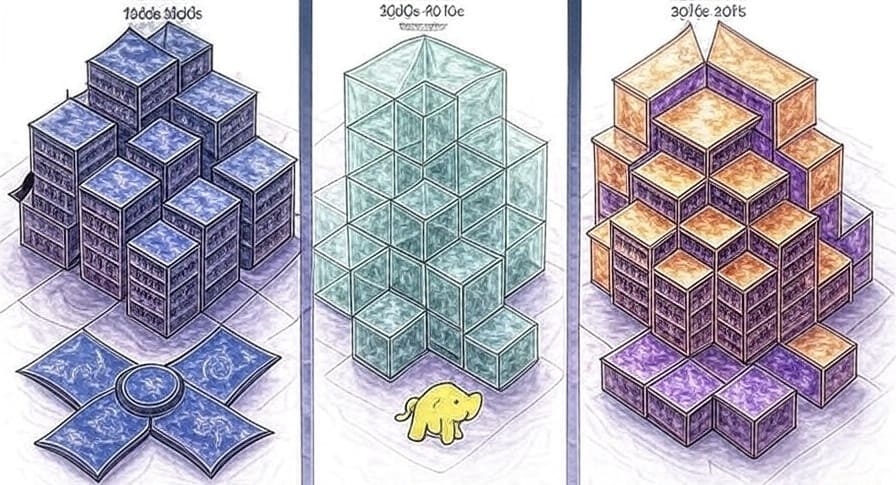

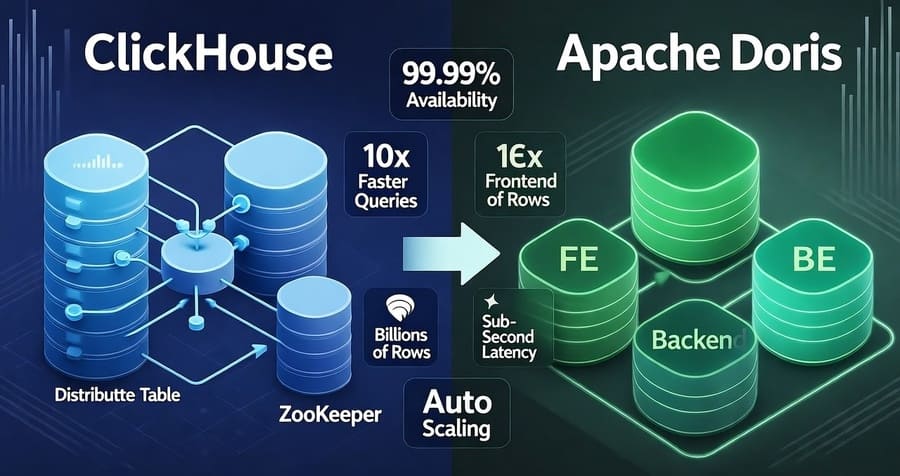


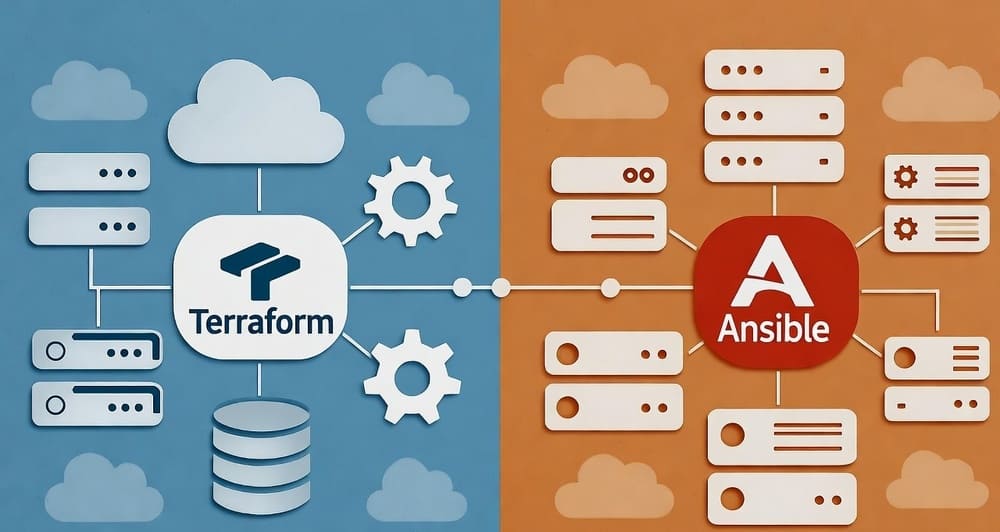
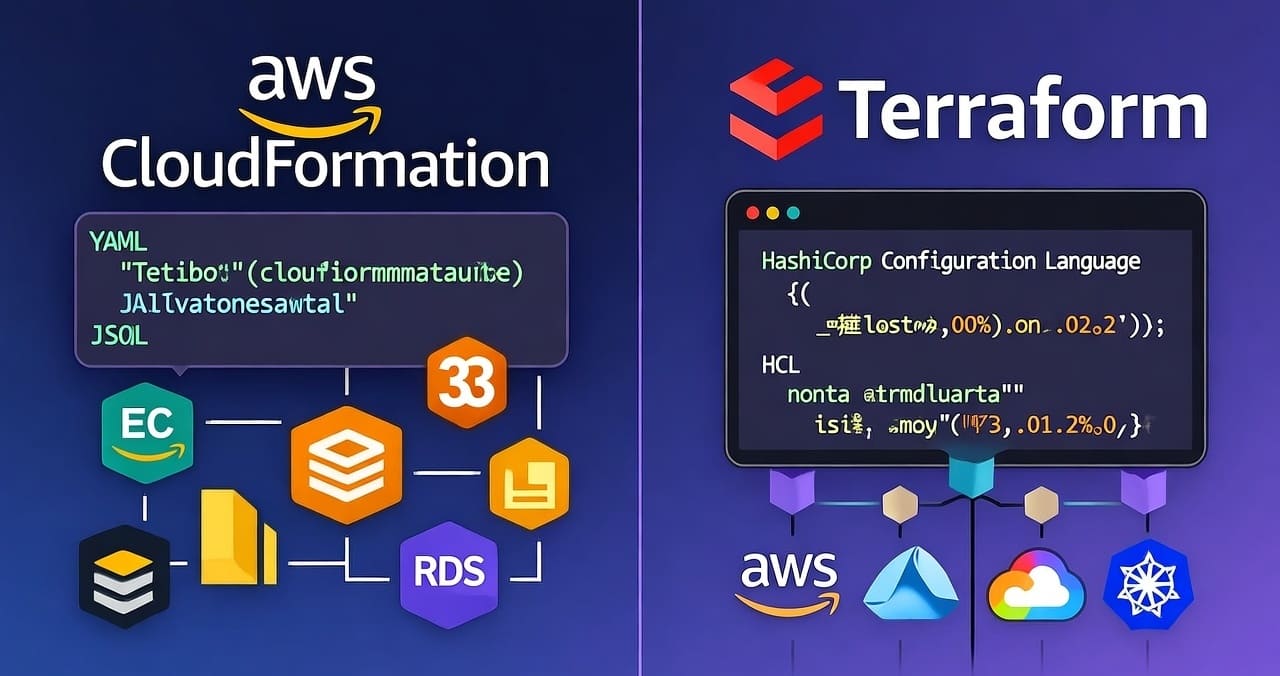
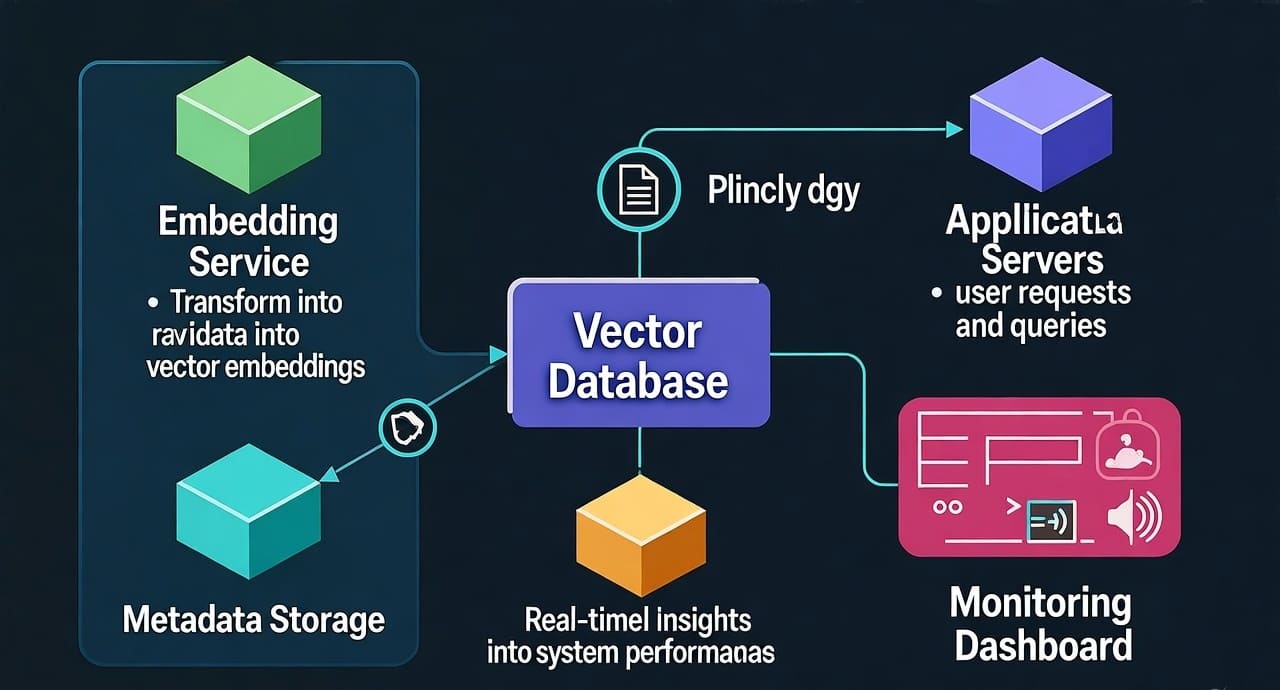


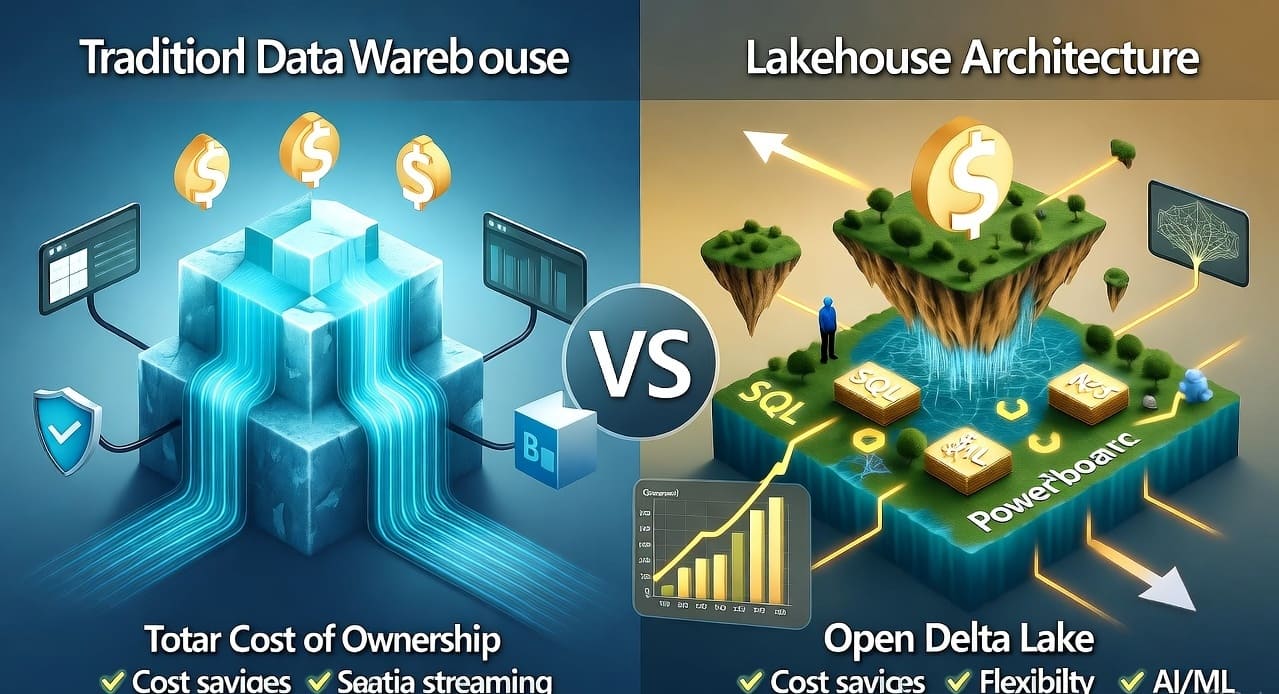
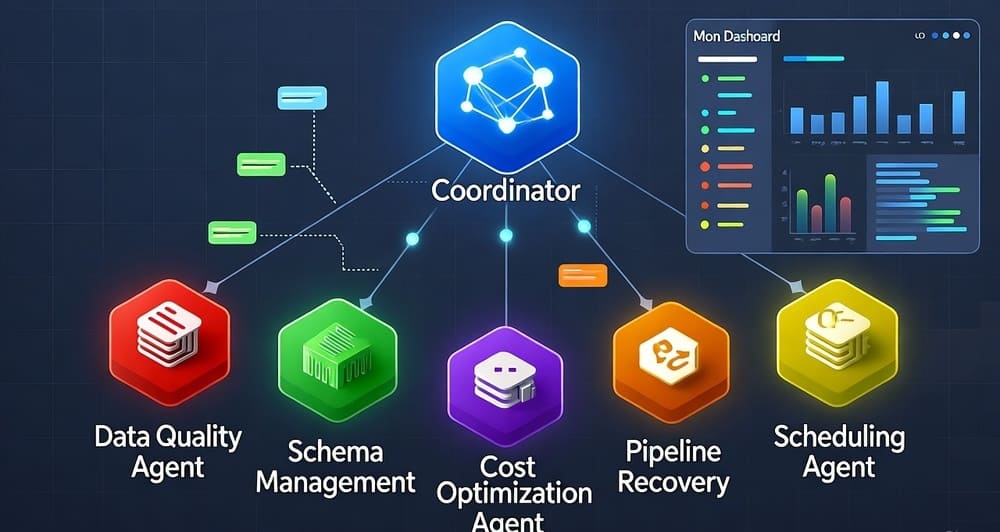

Leave a Reply